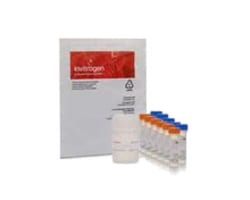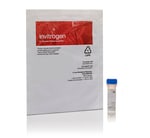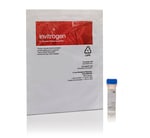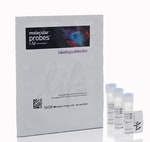Search Thermo Fisher Scientific

Neuroscience Reagents and Kits
Neuroscience reagents and kits are designed for use in neuroscience-specific experiments.
Products (72)
Learn More (1431)
Documents & Support
(7)72 Products
Filter
Dextran, Rhodamine B, 70,000 MW, Neutral Invitrogen™
Labeled dextrans are hydrophilic polysaccharides most commonly used in microscopy studies to monitor cell division, track the movement of live cells, and to report the hydrodynamic properties of the cytoplasmic matrix. The labeled dextran is commonly introduced into the cells via microinjection.
Nissl staining is a standard histological method for visualizing neurons in the brain and spinal cord. Composed of ribosomal RNA associated with the rough endoplasmic reticulum in neuronal perikarya and dendrites, the Nissl substance redistributes within the cell body in injured or regenerating...
Nissl staining is a standard histological method for visualizing neurons in the brain and spinal cord. Composed of ribosomal RNA associated with the rough endoplasmic reticulum in neuronal perikarya and dendrites, the Nissl substance redistributes within the cell body in injured or regenerating...
Dextran, Texas Red™, 3000 MW, Lysine Fixable Invitrogen™
Labeled dextrans are hydrophilic polysaccharides most commonly used in microscopy studies to monitor cell division, track the movement of live cells, and to report the hydrodynamic properties of the cytoplasmic matrix. The labeled dextran is commonly introduced into the cells via microinjection.
Dextran, Alexa Fluor™ 680; 3,000 MW, Anionic Invitrogen™
Labeled dextrans are hydrophilic polysaccharides most commonly used in microscopy studies to monitor cell division, track the movement of live cells, and to report the hydrodynamic properties of the cytoplasmic matrix. The labeled dextran is commonly introduced into the cells via microinjection.
BrainStain™ Imaging Kit Invitrogen™
The BrainStain™ Imaging Kit enables three-color combinatorial labeling of myelin, neurons, and nuclei in brain cryosections in a single 20-minute staining step. The kit contains novel stains that can be used together in one staining solution or separately and replaces traditional methods that can...
NeuroTrace™ 435/455 Blue Fluorescent Nissl Stain Invitrogen™
Nissl staining is a standard histological method for visualizing neurons in the brain and spinal cord. Composed of ribosomal RNA associated with the rough endoplasmic reticulum in neuronal perikarya and dendrites, the Nissl substance redistributes within the cell body in injured or regenerating...
α-Bungarotoxin, Alexa Fluor™ 647 conjugate Invitrogen™
Thermo Fisher Scientific offers a broad selection of Invitrogen alpha-bungarotoxin conjugates, including Alexa Flour and Alexa Flour Plus conjugates. Alpha-bungarotoxin, a 74-amino acid peptide extracted from Bungarus multicinctus venom, binds with high affinity to the alpha subunit of the nicotinic...
Labeled dextrans are hydrophilic polysaccharides most commonly used in microscopy studies to monitor cell division, track the movement of live cells, and to report the hydrodynamic properties of the cytoplasmic matrix. The labeled dextran is commonly introduced into the cells via microinjection.
Labeled dextrans are hydrophilic polysaccharides most commonly used in microscopy studies to monitor cell division, track the movement of live cells, and to report the hydrodynamic properties of the cytoplasmic matrix. The labeled dextran is commonly introduced into the cells via microinjection.
Labeled dextrans are hydrophilic polysaccharides most commonly used in microscopy studies to monitor cell division, track the movement of live cells, and to report the hydrodynamic properties of the cytoplasmic matrix. The labeled dextran is commonly introduced into the cells via microinjection.
Labeled dextrans are hydrophilic polysaccharides most commonly used in microscopy studies to monitor cell division, track the movement of live cells, and to report the hydrodynamic properties of the cytoplasmic matrix. The labeled dextran is commonly introduced into the cells via microinjection.
Dextran, Texas Red™, 70,000 MW, Neutral Invitrogen™
Labeled dextrans are hydrophilic polysaccharides most commonly used in microscopy studies to monitor cell division, track the movement of live cells, and to report the hydrodynamic properties of the cytoplasmic matrix. The labeled dextran is commonly introduced into the cells via microinjection.
Lucifer Yellow CH, Lithium Salt, 25 mg Invitrogen™
Lucifer yellow CH, lithium salt is a water-soluble dye with excitation/emission peaks of 428/536 nm. It is a favorite tool for studying neuronal morphology, because it contains a carbohydrazide (CH) group that allows it to be covalently linked to surrounding biomolecules during aldehyde fixation.
Alexa Fluor™ 594 Hydrazide Invitrogen™
Alexa Fluor™ 594 Hydrazide is useful as a cell tracer and as a reactive dye for labeling aldehydes or ketones in polysaccharides or glycoproteins. Alexa Fluor™ 594 is a bright, red fluorescent dye. Used for stable signal generation in imaging and flow cytometry, Alexa Fluor™ 594 dye is water soluble...
Learn More (1,431)
View all
Three Invitrogen Molecular Probes fluorogenic reagents—CellROX Deep Red, CellROX Green and CellROX Orange —have been developed for the detection and quantitation of reactive oxygen species (ROS) in live cells.
Optimized real-time PCR (qPCR) analysis enables sensitive and specific quantification of nucleic acids. Reagent selection plays a critical role in any qPCR or RT-qPCR protocol to help ensure optimal performance and reliable results.
Documents & Support (7)
View all
Neuroscience Protein Buffer Reagent Kit
Do you offer any products to measure neuronal cell health?



